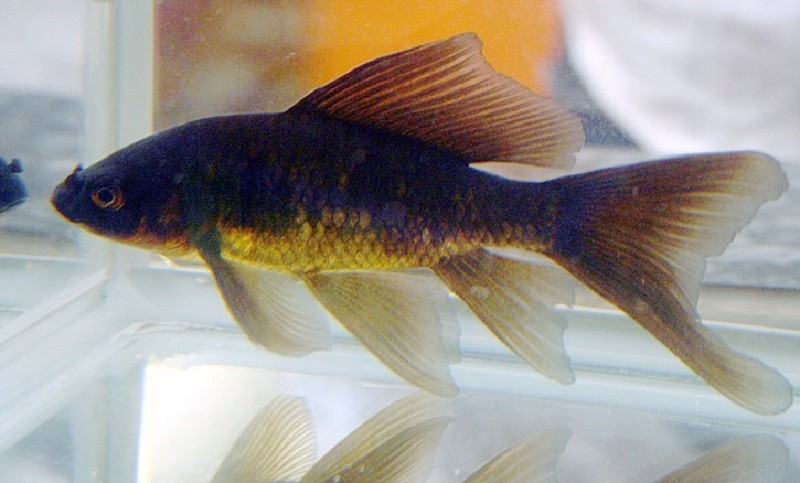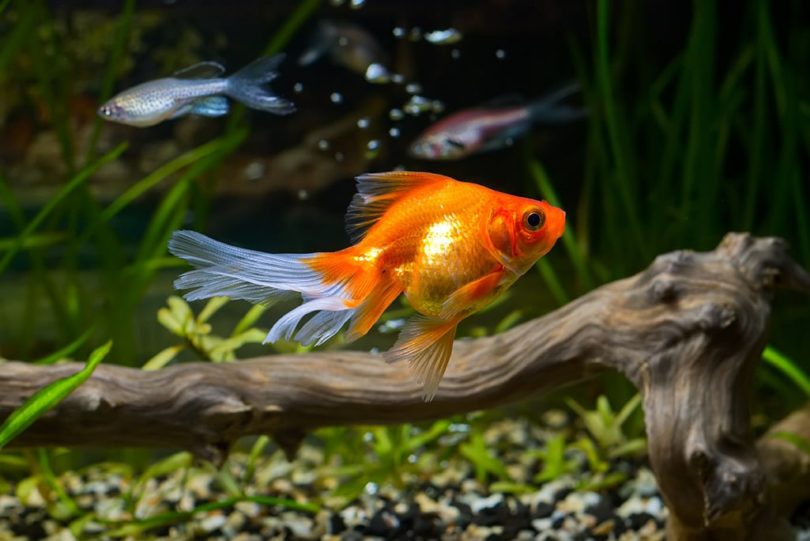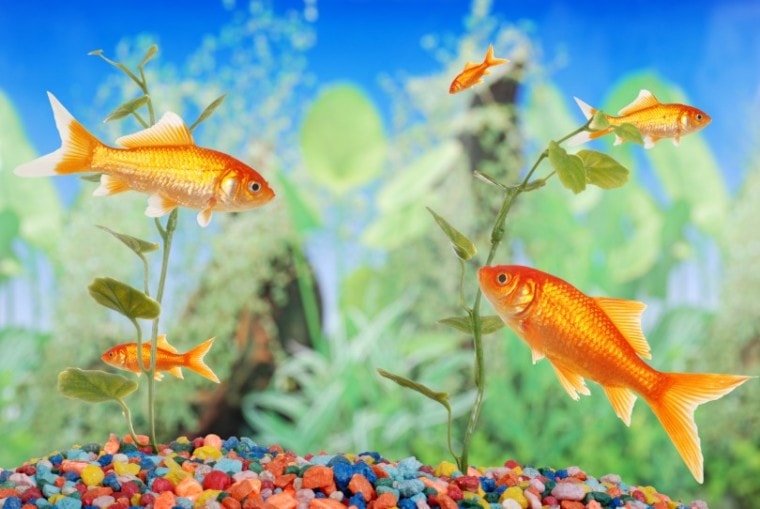
With all the filtration that goldfish require, it can be really easy to end up with a strong current in your goldfish’s tank. Generally speaking, you aren’t going to over filtrate your tank, but you can create a strong current within your goldfish tank that could be detrimental to the health and wellness of your goldfish. There are a few things to consider in how you set up anything in your goldfish tank that may create a current. Read on for more information regarding goldfish and the water current in your tank!
What Current Do Goldfish Experience in Nature?
In the wild, goldfish and their close relative, the Prussian carp, can be found in multiple types of environments. The main environment that they live in naturally is slow-moving rivers and streams. They are sometimes found in lakes and ponds, and since they can live in low oxygen environments, they can happily live in bodies of water with heavy sludge and low currents.
Goldfish have become invasive in some areas, so they are increasingly being found in lakes and ponds, which can have varying degrees of current. It’s rare to find goldfish in fast-moving bodies of water, though. This means it’s unusual to spot them in places like fast-moving rivers or near waterfalls.
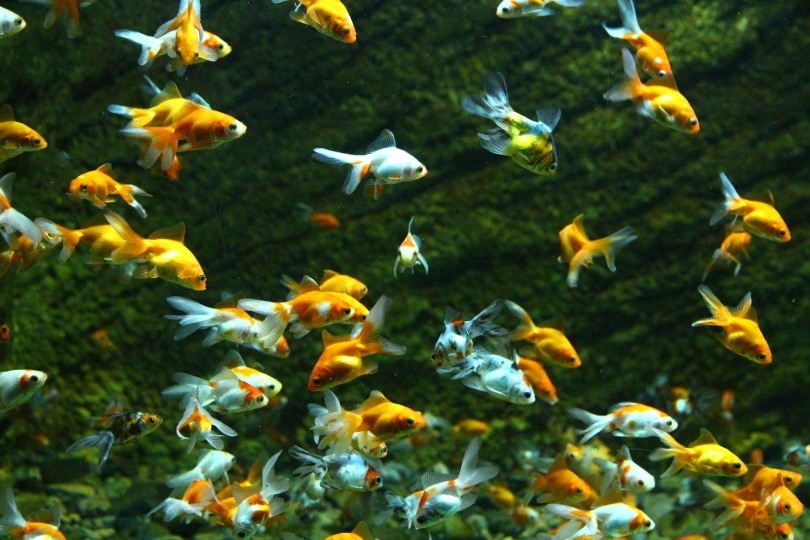
What Current Do Goldfish Need in Captivity?
In your tank, your goldfish will be happiest with a slow-moving current, just like they would experience in nature. This doesn’t necessarily translate to providing no current, though! Many goldfish seem to enjoy areas of faster moving water that they can play in. This is best coupled with calm areas with little to no current. Keep in mind that water movement is going to help reduce stagnation, increase filtration efficiency, and increase dissolved oxygen in the water.
It’s also important to keep in mind that goldfish are highly adaptable animals but, like most fish, they don’t do well with sudden environmental changes. What this means is that if you get a goldfish directly from a small business breeder, you’re likely getting a goldfish that has been kept in an environment with a gentle current, so they should adjust quickly to a gentle current in your tank.
If you get a goldfish from the feeder tank at the pet store, then it’s likely they came from a largescale breeding operation with heavy filtration. Pet stores also have really powerful filtration systems that create strong currents. If you’ve ever spotted small fish struggling to swim steadily in a pet store, they were likely fighting against a strong current due to the high filtration. Taking a goldfish from that type of environment to your home tank with no current at all may be a stressful transition.
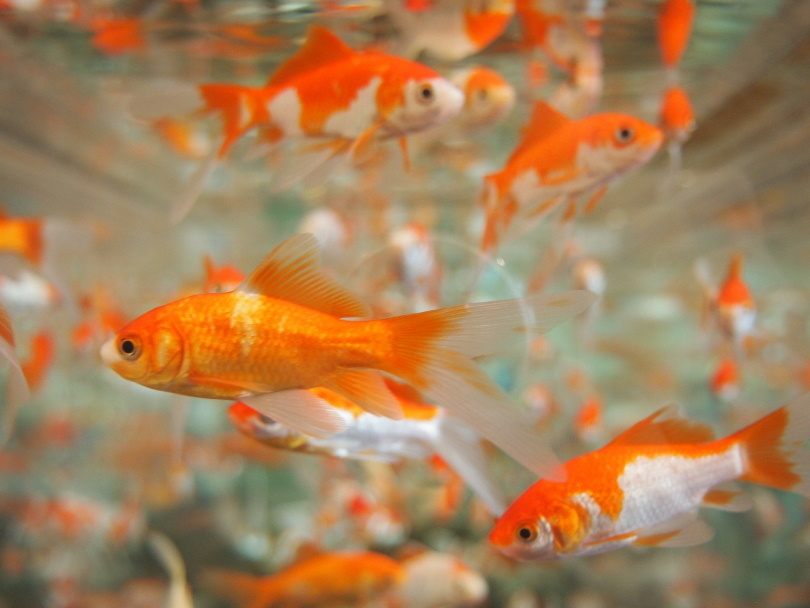
What Can I Do to Replicate the Current My Goldfish Needs?
The key to creating gentle currents for your goldfish is to avoid using anything that will create powerful currents directly into the swimming space. For example, you don’t want to use a powerhead for a goldfish tank. However, air stones and filters are great options for creating gentle currents that provide your goldfish with the option of getting out of the current. Strong filters may require the addition of a baffle to help reduce the water current the filter output adds to the tank.
Some goldfish enjoy having currents to swim through and play in, which is what makes things like air stones and sponge filters great options. They only provide a gentle, upward current that your goldfish can enter and exit as they choose. An air stone isn’t going to create a current that requires your goldfish to fight against it to perform normal daily activities like eating and resting.
What Happens if the Current is Too Strong or Too Weak?
If the current in your goldfish’s tank is too weak, it may create some stress while they try to adjust to a low dissolved oxygen level in the water. It may also cause stress to your fish if they are used to a strong current. Sometimes, goldfish will adjust to a high stress environment, like an environment with a strong current, so it may actually create stress in a low current environment just because they are having to readjust.
If you are looking for help to get the water quality just right for your goldfish family in their aquarium, or just want to learn more about goldfish water quality (and more!), we recommend you check out the best-selling book, The Truth About Goldfish, on Amazon today. It covers everything from water conditioners to tank maintenance, and it also gives you full, hard copy access to their essential fishkeeping medicine cabinet!
If the current in your goldfish tank is too strong, then your goldfish can become extremely stressed, making them susceptible to infections. A powerful current can require a lot of energy to swim against, which can take away from normal behaviors like foraging. If your goldfish is spending most of their time fighting a strong current, they are eating less and burning more energy. They may experience lethargy, low sociability, and weight loss.
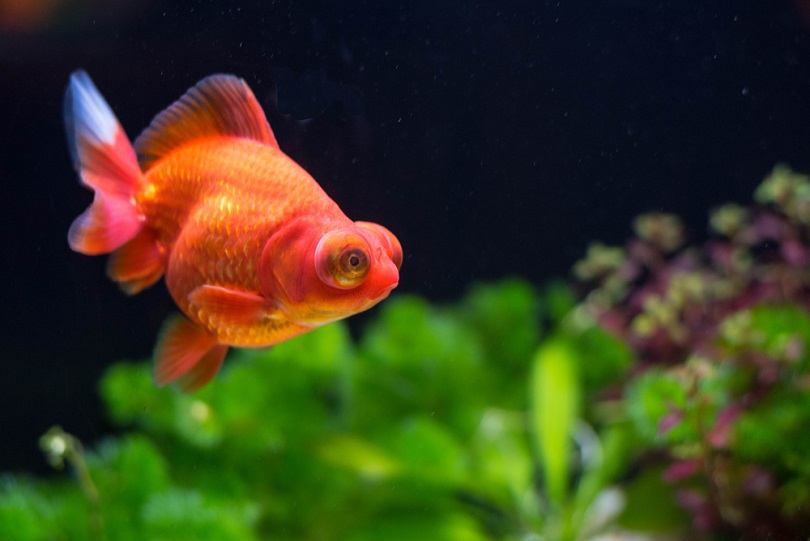
Conclusion
Goldfish are happiest in environments with gentle currents since these most closely duplicate their natural environment. The good news is that goldfish are adaptable, so don’t overthink it! Provide gentle currents that your goldfish have the ability to get out of if they want to. Gentle currents can help create an enriching, healthy environment for your goldfish that won’t create stress and illness in the long term. Filters, air stones, bubblers, and other aquarium electronics that create currents can be adjusted in just about any way you need to in order to control the current for your tank.
Featured Image Credit by: Michael C. Gray, Shutterstock


